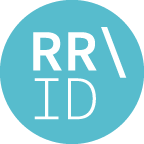College Campuses and COVID-19 Mitigation: Clinical and Economic Value
This article has been Reviewed by the following groups
Listed in
- Evaluated articles (ScreenIT)
- Evaluated articles (Rapid Reviews Infectious Diseases)
Abstract
Article activity feed
-
-

SciScore for 10.1101/2020.09.03.20187062: (What is this?)
Please note, not all rigor criteria are appropriate for all manuscripts.
Table 1: Rigor
NIH rigor criteria are not applicable to paper type.Table 2: Resources
No key resources detected.
Results from OddPub: We did not detect open data. We also did not detect open code. Researchers are encouraged to share open data when possible (see Nature blog).
Results from LimitationRecognizer: We detected the following sentences addressing limitations in the study:These results should be viewed in the context of several limitations. First, while we tried to capture the major COVID-19 mitigation strategies that colleges and universities are considering, we examined only a limited number of strategies. We also did not capture all potential externalities that these institutions might face, such as …
SciScore for 10.1101/2020.09.03.20187062: (What is this?)
Please note, not all rigor criteria are appropriate for all manuscripts.
Table 1: Rigor
NIH rigor criteria are not applicable to paper type.Table 2: Resources
No key resources detected.
Results from OddPub: We did not detect open data. We also did not detect open code. Researchers are encouraged to share open data when possible (see Nature blog).
Results from LimitationRecognizer: We detected the following sentences addressing limitations in the study:These results should be viewed in the context of several limitations. First, while we tried to capture the major COVID-19 mitigation strategies that colleges and universities are considering, we examined only a limited number of strategies. We also did not capture all potential externalities that these institutions might face, such as lost revenue from cancelled sports and the impact of social distancing on students’ quality of life, and we did not examine the impact of contact tracing on transmission. Finally, there continues to be uncertainty about many aspects of COVID-19 testing and immune response. We used the best currently available data and limited our analysis to the duration of one semester. In conclusion, implementing extensive social distancing and mandatory mask-wearing policies would enable higher education institutions to have the biggest impact in reducing COVID-19 infections among students and faculty. Routine laboratory testing would further reduce infections but would require less costly tests coupled with markedly increased capacity to be feasible for many colleges.
Results from TrialIdentifier: No clinical trial numbers were referenced.
Results from Barzooka: We did not find any issues relating to the usage of bar graphs.
Results from JetFighter: We did not find any issues relating to colormaps.
Results from rtransparent:- Thank you for including a conflict of interest statement. Authors are encouraged to include this statement when submitting to a journal.
- Thank you for including a funding statement. Authors are encouraged to include this statement when submitting to a journal.
- No protocol registration statement was detected.
-

Kathy Leung
Review 1: "College campuses and COVID-19 mitigation: clinical and economic value"
This is a comprehensive model that covers a timely topic; however, the many estimations that went into the model, as well as the use of "contact-hours" as a key parameter, may make the conclusions subject to uncertainty.
-

David Kim
Review 2: "College campuses and COVID-19 mitigation: clinical and economic value"
This is a comprehensive model that covers a timely topic; however, the many estimations that went into the model, as well as the use of "contact-hours" as a key parameter, may make the conclusions subject to uncertainty.
-

Benjamin Linas
Review 3: "College campuses and COVID-19 mitigation: clinical and economic value"
This is a comprehensive model that covers a timely topic; however, the many estimations that went into the model, as well as the use of "contact-hours" as a key parameter, may make the conclusions subject to uncertainty.
-

Strength of evidence
Reviewers: Kathy Leung (The University of Hong Kong) | 📒📒📒 ◻️◻️
David Kim (Tufts) | 📘📘📘📘📘
Benjamin Linas (Boston University) | 📗📗📗📗◻️ -


